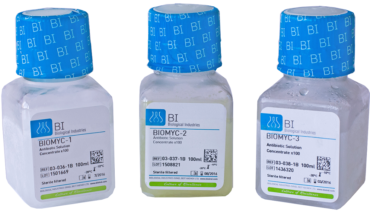A mycoplasma-free cell culture laboratory and routinely tested cells are essential for safe cell products and serious cell culture research.
Mycoplasma contamination in cell culture compromises the reliability, reproducibility and consistency of experimental data. It is not possible to predict how mycoplasma contamination will actually affect the metabolic, genetic, immunological and morphological state of the cell culture in the individual case. The fact is that mild to severe changes are possible in virtually all areas of cellular function. The consequences are research results that lead to ambiguous, misleading or simply wrong publication data and conclusions. Many scientific journals and magazines have already addressed this issue and ask their authors to confirm that their cells are mycoplasma-free. This means: Without a negative mycoplasma test, no publication of scientific results.
The fight against contamination is a constant companion of cell culture. Ever since cells have been grown in vitro, cell culture users have been busy trying to prevent contamination to the best of their abilities – by working sterilely and – unfortunately too often – by adding antibiotics. Mycoplasmas represent a special case within bacterial and fungal cell culture contaminants. On the one hand, because the majority of preventive antibiotics and antifungal agents used to have no effect, and on the other hand, because most mycoplasma-infected cells simply do not show the infection. Unlike “common” contaminations, where the rapid growth of the microorganisms leads to turbidity of the medium / turnover of the pH indicator phenol red / streaking in a very short time, the presence of the slow-growing, tiny mycoplasmas is usually not obvious. In contrast to contamination with other bacteria or even fungi (yeasts), a mycoplasma infestation can therefore not be detected without specific test methods.
Mycoplasmas are very small, parasitic bacteria whose broad host spectrum includes not only humans and other mammals, but also birds, reptiles, fish, insects and plants. Their special characteristic is the lack of a cell wall, which means that mycoplasmas not only have a natural resistance to beta-lactam antibiotics (penicillin derivatives, cephalosporins and carbapenems) but also have an extremely elastic cell shape.
Mycoplasma contamination can be transmitted directly through aerosols and inadequately sterile techniques – or indirectly through media, solutions and laboratory equipment. Although mycoplasmas are omnipresent in nature, the vast majority of cell culture infections are due to only six species whose host of origin is cattle (Mycoplasma arginini and Acholeplasma laidlawii), swine (Mycoplasma hyorhinis) and humans (Mycoplasma orale, Mycoplasma fermentans, and Mycoplasma hominis). The explanation is simple: once introduced via contaminated animal media supplements such as serum, mycoplasmas from pigs and cattle were able to establish themselves in continuous cell lines and were passed from cell line to cell line within laboratories. Contamination with human mycoplasma strains can be traced back to the users. This is because no matter how careful, sterile and conscientious the work is done in the laboratory, transmission of mycoplasma species established in the human oral cavity by laboratory personnel can never be completely ruled out.
Nowadays, mycoplasma detection is usually performed indirectly by PCR with mycoplasma-specific primers. In contrast to direct detection (by classical cultivation on a nutrient medium), the PCR method is fast and uncomplicated to perform. Another advantage of PCR-based testing is that it also detects non-cultivable mycoplasma species.
In the case of a positive mycoplasma test, autoclaving and disposal of the infected cell culture is the best and simplest solution in most cases. Only if valuable cells that cannot be easily replaced are involved should treatment of the cells be considered. The prerequisite is that the potential source of infection has been eliminated and that the infected cells are still reasonably vital. The worse the cell constitution, the worse the prospects for success.
The most promising elimination method for mycoplasmas is treatment of the cells with appropriate antibiotics and antibiotic combinations. For this purpose, we recommend either ciprofloxacin or the sequential use of tiamulin and minocycline. Both treatment methods are characterized by low resistance on the mycoplasma side and low cytotoxicity.
To minimize the risk of mycoplasma recontamination, the following recommendations should be followed:
- Good laboratory practice
- Good laboratory hygiene; regular disinfection of all surfaces (work areas, sterile bench, equipment, pipettes,…)
- Use of 0.1 µm filters for sterilization of media, serum and non-autoclavable cell culture reagents
- Regular mycoplasma testing
- Cryopreservation as a back-up to quickly dispose of infected cultures
- Responsible, sparing use of antibiotics
Cell lines grown in antibiotic-containing medium have significantly higher mycoplasma contamination rates than antibiotic-free cultures. Due to the high use of antibiotic additives used as a preventive measure, the mycoplasma strains resident in the cell culture have been able to develop numerous resistances to these antibiotics. Streptomycin, gentamycin, neomycin and kanamycin are particularly affected, with resistance levels of around 80%. Permanently used antibiotics are accordingly not a suitable means of protecting cells from mycoplasmas. In fact, the opposite is true in the long term. Antibiotic practice conveys a false sense of security that supports the further spread of mycoplasma-contaminated cells and promotes further resistance formation.

